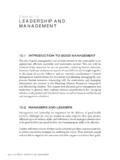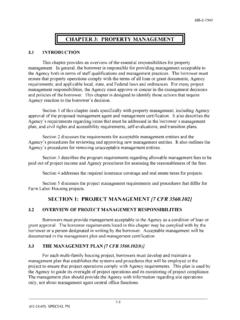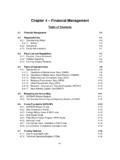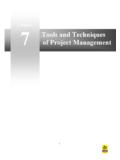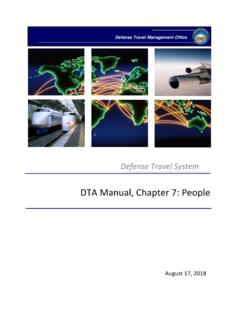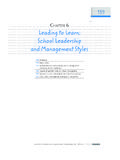Transcription of 6.7 Transportation Systems Management - PCTPA
1 Placer County Transportation Planning Agency 2035 Regional Transportation Plan chapter - Action Element Transportation Systems Management (TSM) Page Transportation Systems Management This chapter describes Transportation System Management (TSM) techniques, which are generally low-cost and designed to maximize the efficiency of the existing Transportation system, reduce travel demand and dependence on single occupant vehicles, improve air quality, and reduce or eliminate the need for new and expensive Transportation infrastructure. Transportation SYSTEM Management (TSM) Finding creative solutions to deal with growth in population, traffic congestion, and achieving federal air quality standards, is an ongoing effort.
2 One element of this effort that remains constant is finding ways to make our existing Transportation system as efficient as possible. This is the role of Transportation System Management (TSM). Transportation Systems Management (TSM) is often used interchangeably with Transportation Control Measures (TCMs) and Travel Demand Management (TDM) to describe a series of techniques designed to maximize the efficiency of the existing Transportation system by reducing dependence on single occupant vehicles. The common goals of TSM, TCMs, and TDM are to reduce traffic congestion, improve air quality, and reduce or eliminate the need for new and expensive Transportation infrastructure.
3 Techniques are generally low-cost measures to reduce travel demand or improve the utilization of existing Transportation facilities. The differences between the three concepts are subtle. Each contains alternative Transportation measures, such as carpooling, transit, bicycling, walking, vanpooling, compressed work weeks, and telecommuting. Transportation Systems Management (TSM) places emphasis on reducing traffic congestion by increasing the person-trip capacity of existing Transportation Systems . TSM techniques also include restriping roadways for channelization, ramp metering, establishment of freeway auxiliary lanes, and freeway service patrol.
4 Travel Demand Management (TDM) strategies are designed to influence an individual s travel behavior by reducing the demand for single occupant vehicle travel, especially during peak commute periods. TDM strategies include techniques such as preferential parking for carpoolers, teleconferencing and advanced communication technology. Transportation Control Measures (TCMs) are geared towards reducing air pollution through techniques such as alternative fuel vehicles. Since 1981, the Federal Highway Administration (FHWA) and the Federal Transit Administration (FTA) have required that Transportation Systems Management (TSM) be part of the regional Transportation planning and programming process.
5 Specifically, the Regional Transportation Plan must have a TSM element which describes how the region intends to deal with the movement of people and goods by improving the efficiency and effectiveness of the total Transportation system. SACOG s MTP 2035 identifies a goal to reduce regional trips anticipated in the MTP by 10 percent. Land uses defined by Blueprint principals provide the framework for the future reduction in trips and VMT. TSM and TDM programs are a complementary component toward achieving the 10 percent trip reduction goal. Work-based trips account for about 20 percent of all Placer County Transportation Planning Agency 2035 Regional Transportation Plan chapter - Action Element Transportation Systems Management (TSM) Page daily trips in the region.
6 To contribute to the goals set forth in the MTP 2035, TSM and TDM programs will need to expand services to target the other 80 percent of regional trips. This chapter outlines various TSM and TDM strategies currently implemented in Placer County that will contribute toward achieving the regional goal. According to 2005 Urban Mobility Report prepared by the Texas Transportation Institute, using 2002 data for Sacramento, about 48 percent of daily travel occurs in congested conditions, resulting in 40 hours of delay per traveler per year at a total congestion cost of $739 per traveler per year.
7 TSM STRATEGIES Traffic Flow Improvements Roadway restriping, spot widening, channelization, ramp metering, auxiliary lanes, elimination of on-street parking, and computerized signalization are techniques currently used to improve the flow of traffic without new road construction. Roadway restriping seeks to increase the number of lanes by reducing lane width, thus increasing traffic capacity. Channelization, which is often done in conjunction with restriping, adds turn lanes to busy roadways to eliminate traffic backups behind cars trying to make turns.
8 Auxiliary lanes are often added to ease merging of traffic onto and off of freeways, such as Interstate 80. Elimination of on-street parking is done to add lanes, and thus capacity, to heavily traveled roadways. In addition, traffic backups caused by vehicles entering or exiting on-street parking spaces is eliminated. Computerized signalization seeks to coordinate signal timing to smooth traffic flow. Freeway Service Patrol (FSP) Approximately half of the delay experienced by travelers in the United States is due to causes other than simple high volumes of traffic.
9 Much of this nonrecurring congestion occurs as a result of traffic accidents and stalled vehicles. Quickly identifying and removing vehicle incidents reduces traveler delay by returning traffic capacity to normal levels. Freeway service patrol (FSP) programs are designed to reduce the traffic congestion during peak commute periods on area freeways by removing traffic impediments, such as cars with mechanical problems or that have been involved in accidents, as well as assisting the motoring public. Placer County Transportation Planning Agency 2035 Regional Transportation Plan chapter - Action Element Transportation Systems Management (TSM) Page In 2003, PCTPA received grant funding from the Placer County Air Pollution Control District (APCD) to implement a Freeway Service Patrol in the congested areas of I-80 in south Placer County.
10 This service operates weekdays during peak commute periods. In 2005 and 2008, the Freeway Patrol Service was augmented by State funding, allowing the program to expand to SR 65 and adding hours of operation. A service truck which provides non-tow related service was added in 2009 to complement the existing weekday tow service and on Sundays in 2010 to assist recreational traffic occurring in the late afternoon / early evening. Table summarizes recent assist data for the PCTPA administered program. Table Freeway Service Program Assist Comparison By Problem Type & Vehicle Location Note: Service Truck implemented in January 2009 (reflects only 6 months of assists).
